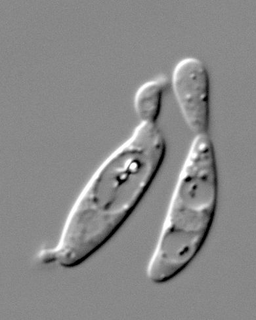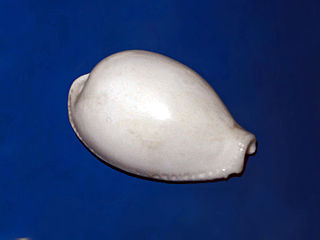
The ivory gull is a small gull, the only species in the genus Pagophila. It breeds in the high Arctic and has a circumpolar distribution through Greenland, northernmost North America, and Eurasia.
The Ivory Coast rat is a species of rodent in the family Muridae. It is found in Ivory Coast, possibly Ghana, and Liberia. Its natural habitats are subtropical or tropical moist lowland forest and subtropical or tropical swampland.
Correa eburnea, commonly known as the Deep Creek correa, is a species of shrub that is endemic to the Fleurieu Peninsula in South Australia. It has papery, elliptic to egg-shaped leaves, and up to five green, nodding flowers arranged in leaf axils.

The Microbotryomycetes are class of fungi in the Pucciniomycotina subdivision of the Basidiomycota. Until recently, the class contained four orders: the Heterogastridiales, the Leucosporidiales, the Microbotryales, and the Sporidiobolales, which contained a total of 4 families, 25 genera, and 208 species. The order Kriegeriales, containing two families, Kriegeriaceae and Camptobasidiaceae, was defined in 2012.
Myurella eburnea is a species of sea snail, a marine gastropod mollusk in the family Terebridae, the auger snails.
Perirhoe is a genus of sea snails, marine gastropod mollusks in the family Terebridae, the auger snails.
Drupella eburnea is a species of sea snail, a marine gastropod mollusk in the family Muricidae, the murex snails or rock snails.
Phyllocoma (Galfridus) speciosa is a species of sea snail, a marine gastropod mollusk in the family Muricidae, the murex snails or rock snails.

Drupella is a genus of sea snails, marine gastropod mollusks in the family Muricidae, the murex snails or rock snails.

Vermicularia is a genus of sea snails, marine gastropod mollusks in the family Turritellidae.

Naria eburnea, common name ivory cowry, is a species of sea snail, a cowry, a marine gastropod mollusk in the family Cypraeidae, the cowries.
Cymatiella columnaria is a species of predatory sea snail in the family Cymatiidae.
Cymatiella pumilio is a species of predatory sea snail in the family Cymatiidae.
Cymatiella sexcostata is a species of predatory sea snail in the family Cymatiidae.
Cymatiella verrucosa is a species of predatory sea snail in the family Cymatiidae.
Cymatiella is a genus of predatory sea snails, marine gastropod mollusks in the family Cymatiidae.
Niebla eburnea is a fruticose lichen that grows on rocks along the foggy Pacific Coast of North America, from Mendocino County in California south to near Punta Santa Rosalillita in Baja California, and also in the Channel Islands. The epithet, eburnea is in reference to the ivory like appearance of the cortex.
Melanella eburnea is a species of sea snail, a marine gastropod mollusk in the family Eulimidae. The species is one of a number within the genus Melanella.
Roseomonas eburnea is a species of Gram negative, strictly aerobic, coccobacilli-shaped, ivory-colored bacterium. It was first isolated from activated sludge from an herbicide-manufacturing wastewater treatment facility in Jiangsu province, China, and the species was first proposed in 2016. R. eburnea, unlike most species of Roseomonas which are pink or light red, is ivory-pigmented. The species name comes from Latin eburnea. R. chloroacetimidivorans was isolated at the same time as R. eburnea.
Prunus eburnea is a species of wild almond native to Iran. It is a dense shrub 0.2 to 1.2 m tall with gray bark. It is morphologically similar to Prunus lycioides, P. spinosissima, P. erioclada and P. brahuica. It can be distinguished from the similar species by having a pubescent hypanthium. A genetic and morphological analysis shows that it is a good species, with its closest relative being Prunus erioclada. The cross of Prunus scoparia and Prunus eburnea produces Prunus × iranshahrii.




